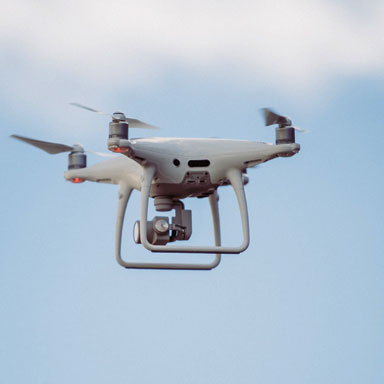‘Gunda’
This independent movie is more experience than ordinary film. “Gunda” is a visionary case for veganism clearly. Russian movie producer Viktor Kossakovsky’s entrancing accomplishment eliminates people from the image to amplify the little minutes in the existences of different livestock, with his eponymous pig at its middle. Throughout 90 mesmerizing minutes, his meandering camera notices Gunda and her piglets, a small bunch of chickens, and a sprinkling of cows just are approaching their lives on an undefined farmland.
Without music or some other clear cunning, “Gunda” neither expects to report creature awareness or humanize it. All things being equal, Kossakovsky’s interesting non-story independent movie analyzes tunnels into the focal point of his subject’s sensory system, meeting the animals according to their very own preferences in an amazing request for compassion that just entreats carnivores to reconsider by suggestion. (With vegetarian lobbyist Joaquin Phoenix endorsed on as a leader maker, it doesn’t have to make its message plain in any case.)
The idea driving the independent movie bears a likeness to Kossakovsky’s past exertion, the euphoric visual gala “Aquarela,” a full length independent movie, naturally cognizant recognition for water all over the planet. Simultaneously, “Gunda” has a more noteworthy clearness to its methodology, with an engrossing spotlight on a speed of life outsider to the human brain but then recognizable as it gets comfortable. By declining to break the spell, the independent movie permits the material to justify itself.
Gunda’s never named in the independent movie, which has no credits to name the area or setting of the venture, however the alleged “independent movie has a place with her from the initial shot. Minutes tick by as the cumbersome animal jabs her head out of the white pigsty that characterizes her reality, and as she rests her head, the casing gets more occupied: One after another, piglets walk all through the pen, twirling around her resting body as they get comfortable to take care of.
Kossakovsky gets in close for the amazing subtleties, yet notwithstanding the weighty shadows that propose some ghastly new interpretation of “Animal Farm,” the grouping accepts on a delicate quality as the minutes delay. Delicate light enlightens the hairs on the babies’ backs, featuring their delicacy as they oink and skip while their mom wavers all through the casing.
So it goes for the remainder of the independent movie. Regardless of the impression of a limit pushing independent moviemaking exercise, there are a few points of reference in play here: Kossakovsky’s obsession with his subject reviews parts of Thomas Bames’ rambling newborn child representation “Infants” as well as the instinctive inundation into nature’s rhythms through sound and picture in “Leviathan.” Like that independent movie, where cameras pitched off a boat to follow fish and fowl the same, the camerawork in “Gunda” (credited to Kossakovsky and Egil Håskjold Larsen) consistently remains fair and square of its stars, drawing near to them as they wander through dry fields and interaction their environmental factors, with each progression and expression adding to a complicated soundscape. While Werner Herzog could think about these creatures’ fantasies, Kossakovsky’s point is to possess the ordinariness of their every day ceremonies, normalizing them for a viewership that wouldn’t know where to begin.
Unfurling across three approximately characterized parts, “Gunda” advances from its pig-family at the beginning to observe a sprinkling of chickens meandering through the brambles, including a one-legged bird unbothered by its handicap. Then, at that point, it’s the cows’ chance to assume responsibility, as they moo and float about with a few combinations of satisfaction and disquietude. Furthermore it’s as simple as that until the end minutes, an amazing development that rethink everything moving toward them.
The charcoal symbolism is so enchanting from each shot to the following that it tends to be not difficult to forget about the master plan and for a large part of the running time, “Gunda” misses the mark on melding its vignettes. The consummation, in any case, gives a grotesque rude awakening that takes us back to reality to examine the environment where these creatures should reside. As Kossakovsky’s camera continues to run, the finale orders a remarkable sort of misfortune totally conveyed through the expressive activities of one crushed pig. Regardless of how individuals decide to process “Gunda,” the movie producer has caught an obvious passionate interaction never seen in very such terms.
Is it true that they are for the most part living on the ranch together? Perhaps not! An end note on the credits uncovers that this independent movie was recorded on homesteads and asylums in Norway, Spain and the UK. Kossakovsky has created a fiction, somewhat. (What’s more who knows; perhaps the encompassing barnyard sounds have likewise been cheated.) But the independent movie shows something intriguing: just by surrounding the pig’s eyes, it demands something uncanny. Gunda’s eyes look spooky and tragic. The cow’s eyes, then again, appear to be cold and haughty.
Humanoid attribution? Indeed, obviously. Yet, there is an excruciating and, surprisingly, disaster implying that is concealed wherever on the homestead: this multitude of creatures are reproduced to be utilized and killed and Kossakovsky cryptically keeps his camera on Gunda after her piglets are at long last detracted from her. Gunda appears to be confounded, bewildered, maybe even shocked. However, there is no enthusiastic history here, no passionate effect. The creature simply continues to exist.
Gunda shares something for all intents and purpose with fiercely impactful narratives, for example, Georges Franju’s Blood of the Beasts or Nikolaus Geyrhalter’s Our Daily Bread, which showed the truth of creature butcher. This shows the odd, clear void that encompasses creatures when the reality of butcher is barely out of shot, the vacant holding up that goes before the headliner.
“Gunda” might be a meditational gradual process, however as it spreads out its vivid varying media woven artwork it drifts between genuine perception and melodious knowledge, and to that end feels like a progression of the nature narrative structure. Simultaneously, there is a quality of dissident purpose prowling right external the boundaries of every scene, in this independent movie as it constructs a contention against creature savagery that rises above the limits of deafening polemics. In the event that it doesn’t persuade meat-eaters to hold the bacon with their eggs – or request eggs in any case – it could basically force them to taste a portion of the aggravation.




